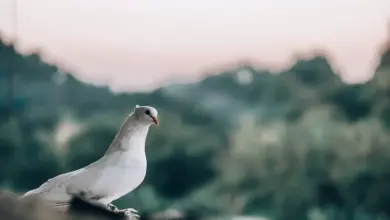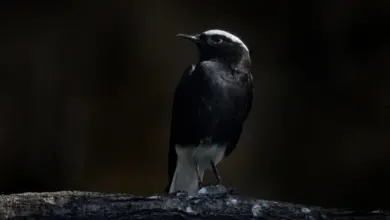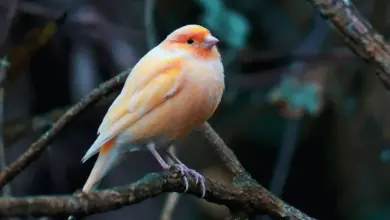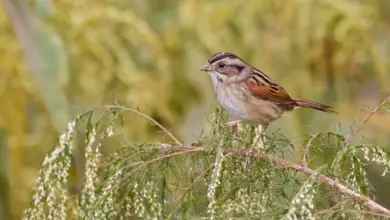Sulawesi Scops Owls (Otus manadensis)
The Sulawesi Scops Owls (Otus manadensis) occur naturally in southeast Asia, in the humid forests of Sulawesi (hence their common name).
These small, highly nocturnal (active at night) owls are rarely seen, but commonly heard within their range.
They spend the days roosting in trees, perching about 6.6 feet (2 meters) above the ground, and becoming active at dusk, when they start hunting.
They are usually found close to open areas, such as ponds, rivers and clearings.
Their flights are silent due to the fact that their flight feathers are covered with a soft, velvety down – which allows them to silently approach their prey.
Subspecies and Ranges
- Otus manadensis manadensis (Quoy and Gaimard, 1830) – Nominate Race
- Range: Sulawesi island (part of the larger Sunda Islands of Indonesia)
- Otus manadensis mendeni (Neumann, 1939)
- Range: Peleng and maybe Labobo Islands which are part of the Banggai Archipelago group located at the far eastern end of Central Sulawesi in Indonesia
- Otus manadensis sulaensis (Hartert, 1898)
- Range: Islands of Taliabu, Seho, Mangole, Sanana, which are part of Sula Islands in North Maluku in Indonesia
- Otus manadensis kalidupae (Hartert, 1903)
- Range: Kaledupa (part of the Tukangbesi Island group off the coast of Sulawesi.
- Otus manadensis siaoensis (Schlegel, 1873)
- Has shorter wings and much shorter and more narrowly barred tail. Some argue that this race may be closer related to the Moluccan Scops Owl (Otus magicus) found in Asia; or should be separated as distinct (its own species).
- Found on Siau Island in North Sulawesi in Indonesia.
Description
The Sulawesi Scops Owl measures 7.5 – 9 inches (19 – 23 cm) in length (including the tail) and weighs about 2.9 – 3.3 oz (83 – 93 g).
Both brown and rufous color morphs occur in the wild; although the brown phase is far more common.
The plumage above is either rufous or brown, streaked and barred blackish brown, with dark-tipped white spots on the scapulars (shoulder feathers).
The plumage below is paler with white spots and dark brown to black streaks.
The tertial flight feathers (= innermost flight feathers of the wing, attached to the bird’s “upper arm”) are barred white.
The tail has narrow pale bars. The bill is horn-colored to brownish in color.
The feathered legs range in color from greyish to brownish yellow. Their eyes are yellow.
Males and females look alike; except the females are slightly larger.
Breeding / Nesting
Sulawesi Scops Owls are generally monogamous and form long-term pair bonds. The breeding season typically starts before the beginning of the monsoon season. To strengthen the pair bond, the male feeds and sings to the female for 3 to 4 weeks before actual nesting starts.
They typically nest in tree cavities, but will also take advantage of abandoned woodpecker nests. The average clutch consists of 2 – 7 white eggs, which are incubated for 25 – 35 days. Both parents raise the young.
Diet / Feeding
The Sulawesi Scops Owls mostly feed on nocturnal insects, such as moths, beetles and crickets, and other invertebrates; and to a lesser extend takes small vertebrates and probably geckos. Most hunting is undertaken at night. Flying insects are hawked (caught mid-air) from a perch.
Alternate (Global) Names
Chinese: ???? … Czech: výre?ek celebeský … Danish: Sulawesidværghornugle … Dutch: Sulawesidwergooruil, Sulawesi-dwergooruil … German: Manadoeule, Manado-Zwergohreule … Estonian: sulawesi päll … Finnish: Celebesinpöllönen … French: Petit-duc de Manado … Indonesian: Celepuk Sulawesi … Italian: Assiolo di Sulawesi … Japanese: serebesukonohazuku … Norwegian: Sulawesiugle … Polish: Syczek jasnobrzuchy … Russian: ????????????? ?????, ????????????? ????? … Slovak: výrik svetlobruchý … Spanish: Autillo Celebiano, Autillo de Célebes … Swedish: Sulawesidvärguv
Web Resources
More Owl Information
- Owl Information
- Index of Owl Species with Pictures
- Owl Eyes / Vision Adaptations
- Pygmy Owls
- Barn Owls
- Horned Owls
- Scops Owls




